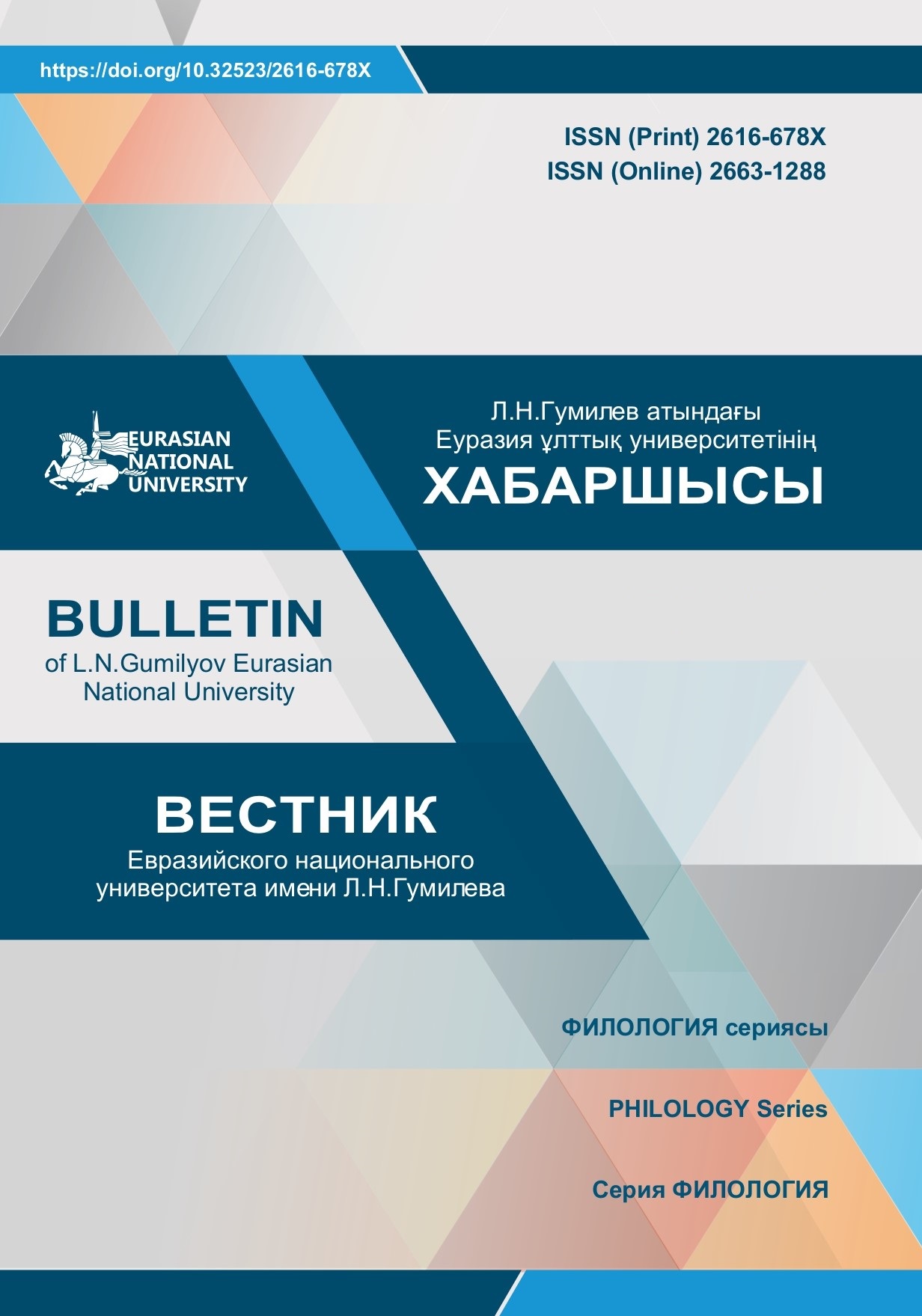Linguoculturological analysis of emotive phraseological units in the Kazakh and Chinese languages
Views: 249 / PDF downloads: 459
DOI:
https://doi.org/10.32523/2616-678X-2023-143-2-19-26Keywords:
emotion, phraseology, phraseological units, linguoculturology, culture, cultural connotation, picture of the worldAbstract
The language of every nation has phrases denoting national identity. In phraseology,
information about the national culture and history of the people is preserved. Kazakh and Chinese
phraseological units are characterized by their independent cultural differences. This, in turn, hinders the
understanding of phraseological units of the Kazakh and Chinese languages.
This article contains the specifics of the use of phraseological units that express emotions. The
linguoculturology of the Kazakh and Chinese peoples are taken into account. In addition, the similarities and
differences between the Kazakh and Chinese phraseological units are analyzed; the cultural characteristics
of the two peoples are considered.
The article presents the results of the analysis, describes the influence of language on the formation of
phraseological units, reveals the result of the impact of historical, social, and cultural events and phenomena
on the development of the language.
Today, comparative phraseology is considered comprehensively; theoretical and practical applied
aspects are deeply studied. In addition, the study of phraseological units in the linguoculturological aspect
in the national speech of each nation plays an enormous role. The understanding of phraseological units is closely connected with the cultural connotation of the
people. This article will help Chinese learners to understand the cultural connotation of the two peoples and
improve their communication skills. Acomparative study of phraseologists in two languages will provide an
opportunity to use phraseological units for appropriate use in speech, in order to avoid misunderstandings
in intercultural communication, and prevent great learning difficulties. The materials of the article are of
practical value for teachers and students studying linguistics and languages.
In this article, 100 emotive phraseological units were considered, including 60 units in Kazakh and 40
units in Chinese.







